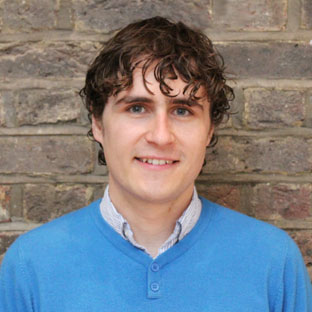We recently surveyed Fellows within the higher education sector, asking them about what worked and what didn't when it came to the development of creative capacities in higher education institutions (HEIs). Although many felt there was lots of work still to do, overall the picture is a positive one, with lots being done already to make HEIs more creative, co-operative and innovative.
The daemons:
Those surveyed were asked to tell us the five things that they believed were barriers to creativity within higher education. The responses were varied, but several key themes came up time and again:
- Rigid structures
- The perceived value of creativity
- Lack of time, funding and expertise
Structure:
The biggest barriers seemed to be structural, with the majority of the respondents stating that existing structures limited the development of creativity within their institutions. Rigidity in curriculum design was a common complaint, with many feeling that courses had no space for creativity, or that there was an inbuilt 'knowledge bias' that kept creative ideas off the table. Others felt that institutional structures were to blame and spoke about a 'silo' mentality that drew too strict a divide between subjects traditionally viewed as 'creative' and those that aren't.
Perceived value:
A significant minority of those we surveyed felt that the perception that creativity lacks value is a key barrier to its development. Many respondents felt that there was an increasing drive towards employability as a key performance indicator for universities. There was a concern that pursing creativity over employability might hinder a university's place in national or international rankings. They also felt that subjects that are seen as traditionally creative suffered because they were unable to bring in funding or secure prestigious grants.
Time, funding and expertise:
A general lack of time, funding and expertise within teaching staff also seems to present a stumbling block to creativity. Several of those surveyed felt that the need for undergraduates to fund their studies through part-time work would undermine attempts at creative curricula, as they would lack the time to fully engage with it. Similarly, while many recognised that there was a lack of creative expertise among university staff, it was also felt that without additional funding or staff time its development would not be a priority.
The better angels:
The good news is that many universities are working to combat structural rigidity, false perceptions around the value of creativity and the lack of funding, money and expertise. Although many examples of good practice were shared with us, the three below showed that the tools to overcome existing barriers might already exist:
Wolverhampton University:
Wolverhampton is challenging the traditional pedagogical structures by making use of their graduate teaching assistants to explore new methodologies, in partnership with lecturers, to change the way courses are delivered.
University of Brighton:
In Brighton creative skills are valued and are designed into the curriculum of every subject. Programmes have been set up across the university to promote entrepreneurial activity and drive amongst their students, and support those who want to start their own business, or pursue an innovative idea.
Southampton Solent University:
Southampton Solent has the largest number of creative industries graduates, not only because they promote creativity in what they say, but because they put their money where their mouth is. They set up Solent Creative in 2011, to bridge the gap between education and work. Students in creative industries work as freelancers on real-world projects, gaining experience that supports their learning as well as earning them some money.
There is no doubt that more can still be done to promote the creative capacities of university staff and students. It is clear that much of what needs to be done surrounds the re-imagining of systems and mind-sets, which is why it is so heartening to see that HEIs are leading the charge.
Next steps...
If you want to know more about the work of the RSA and how it relates to HE, then get in touch with our Project Engagement Team who can tell you more:
Connect with Fellows- Create your online profile, Find like-minded Fellows and Engage with projects in your area.
Be part of a project- Develop a new project, help with an existing one and propose new partners or potential funders by getting in touch.
Be inspired- Read the RSA Journal, submit an opinion piece to RSA Comment or join the discussion on our RSA blogs.
If you're not already an RSA Fellow and you support our mission of 21st century enlightenment, find out more about joining us.
Tom is a Project Engagement Manager, working to connect Fellows with the RSA’s research. Email him or follow him on Twitter at @tom_gilliford
Related articles
-
Blog: The new digital learning age in three tribes, seven charts and three recommendations
Anthony Painter
Anthony Painter explains the key research and findings of our first Power to Create paper - The new digital learning age: how we can enable social mobility through technology.


Join the discussion
Comments
Please login to post a comment or reply
Don't have an account? Click here to register.
I'd love to know if there are any stats associated with the research that can be shared please Tom?
I'm somewhat amazed that there is a creativity versus employability dilemma when the likes of FSB and CBI, not to mention our own all party parliamentary research says quite the opposite?
As a Professor of Creative Entrepreneurship your results do not surprise me and I agree with the previous comment that more academic institutions have structures that limit the potential to develop, however, that is changing with the likes of the two recent QAA Guidance docs in Enterprise and Entrepreneurship / Sustainability, which both call for creativity of some kind.
The biggest hurdle not mentioned here appears to be assessment of student performance, at least from what I see as a Director of Enterprise Educators UK (100 Uni membership). In simple terms, assessment is often set against pre-determined outcomes - which unless skilfully written deter creative opportunities. In EU discussions we are asking education to make distinctions between assessment for Innovation (new perspectives and alternative views) and Implementation (doing as specified).
Silo thinking too, but Business schools for example are learning from Design Thinking and suchlike, so I guess 'watch this space' eh?
Very noticeable - and very predictable - that the three 'Better Angels' cited by Tom Gilliford are former Polytechnics where Creativity has always been valued more highly than in the pre-1992 Universities. Most of the latter do not give the same weight to A levels in Art, Design, Music, Drama and other subjects involving a high level of creativity as they do to 'academic' subjects when calculating the 'points scores' of applicants for undergraduate places. If they do not recruit students with proven creative ability and with ambition to develop their creativity, then we should not be surprised to read of the 'barriers' described in this welcome survey. With little if any experience of developing high levels of creative thinking and practice, pre-1992 universities will have to look to those HE institutions with proven track records in this area to overcome the 'Rigidity in curriculum design', 'knowledge bias' and 'false perceptions around the value of creativity' identified by respondents.